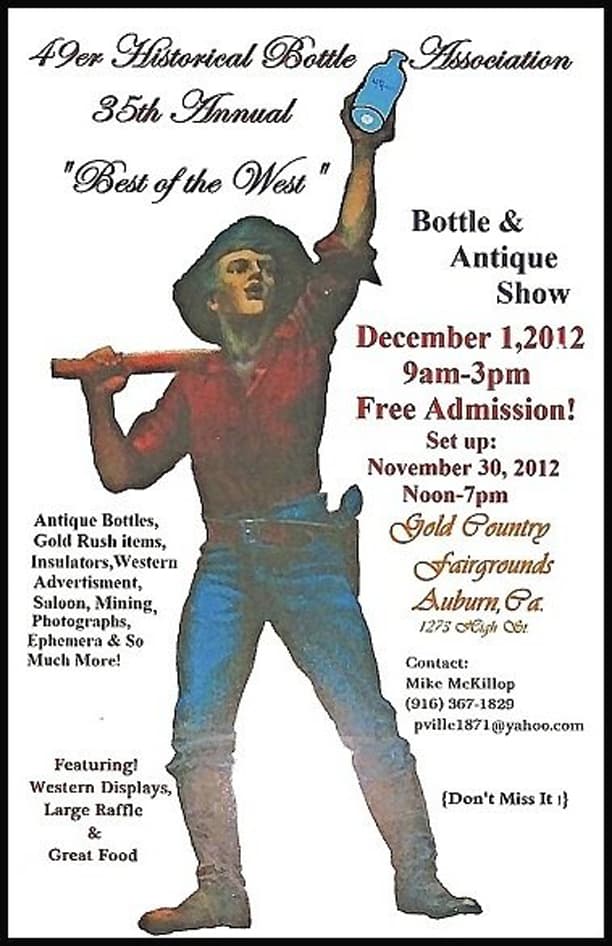 Every now and then I get something interesting in my
"mailbox". This morning I received an email from a non-collector
who's wife had somehow fallen heir to a piece of history.
Every now and then I get something interesting in my
"mailbox". This morning I received an email from a non-collector
who's wife had somehow fallen heir to a piece of history.
His letter read;
"I am not a collector or dealer, just a guy whose wife
was recently given an amber-colored glass Roth & Co. (San Francisco) Bourbon
Whisky bottle that is very obviously from right after the 1906 earthquake. She would like to dispose of it for what it
is worth, and is of course nervous that since wee (sic) don’t know anything about
bottle collecting, she might let get (sic) skunked by some very experienced (but
unscrupulous) collector. Can you give us
some idea what this might be worth and the best way for someone who has no
interest in collecting, or indeed bottles at all, to expose it to the right
potential collectors?
Thanks"
Here's a photo of the label / labels; or rather what's left;
He went on to add;
" Description: Cylindrical, amber glass, not embossed Roth & Co. No chips or cracks. Some bubbles in glass. Bottom is embossed:
400
H
(Ahhh, there's that H again - only now we know that it is Heunisch and not Holt!)
Has an internal screw-top stopper, stippled on top, not
marked with any company name.
The remains of a purple lead seal still present. The labels have not been cleaned.
The most interesting label is still glued around neck. It is imprinted in red letters:
Wait for it...
EMERGENCY PACKAGE
" This is a
genuine Package of Roth & Co’s own Bottling
and is
only temporary, as our stock and
supplies were all destroyed in
the great San Francisco Fire, April
18th, 19th and 20th.
ROTH & CO. 20 - __ NO
BRYANT ST
"
____________________________________________________________________
Ok, so the photos aren't much but what is fascinating is the
address on the neck label. Most of us know that Roth and Co. was located at 316 Market St. at
5:12 AM on April 18, 1906. That location turned into a big wet black spot (WBS in firefighter lingo) by about
noon that day; the firm loosing their entire inventory of liquor, bottles and everything
else needed to conduct business. We also knew that by 1907, they were residing comfortably
in their new digs located at 115
-117 Front St.; less than a block away.
However, the location of Roth & Co. in the months immediately following the
earthquake has remained a mystery; until now. Bryant St.
(probably in the 200 block), which coincidentally or not, is just 4 short blocks
from the old Market St.
location was their (a) temporary location; or was it? In an attempt to pinpoint the address, I located a book entitled; "Relief business directory, May, 1906;
giving names, business and address of San Francisco
firms and business men who were compelled to change their location by the
disaster of April 18 : and who have since located in San Francisco".
But
rather than pinpoint the Bryant St. location, it
gives yet another for Roth & Co.; 1935 Clay St. the month following the disaster.
Actually, not surprising,
since this area of the City was comparatively unaffected by the holocaust that incinerated
the business district following the devastating tremor.
Survival of the
fittest, I'd say.
And so, we can now add yet two more locations to the seemingly endless list of addresses occupied by Roth & Co. over their incredible sixty year tenure in the wholesale liquor industry of San Francisco.
Oh, and if anyone
is interested, the bottle is available and I can put you in touch with the
owner. For just plain 1906 S.F. Earthquake history as it relates to the
wholesale liquor trade, this example is tough to top.

 Every now and then I get something interesting in my
"mailbox". This morning I received an email from a non-collector
who's wife had somehow fallen heir to a piece of history.
Every now and then I get something interesting in my
"mailbox". This morning I received an email from a non-collector
who's wife had somehow fallen heir to a piece of history.